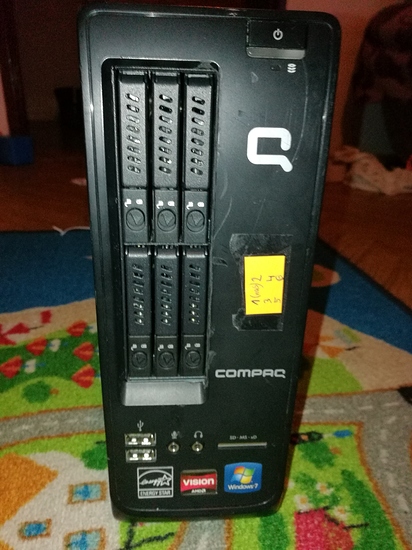I have NAS built on Asus E35m1-l with embeded AMD e-350 2 cores 2 threads 1,6GHz, 15W TDP.
More details here …
Because quite a low specs i decided to leave alone more demanding NAS OS’es like FreeNAS/Nas4Free and took Openmediavault. Unfortunately i had problems with installing ZFS plugin so i built my pool with default software - LVM (2 x 500GB in raid1). But i hear more and more how unreliable LVM raids are and i also wanted to switch my Syncthing for Nextcloud or Owncloud and AFAIK i would have to make this separately from OMV. Its not a problem for me but this and ZFS plugin problems led me to thinking about switching OMV for something else …
I want to have NAS with ZFS and RAID1 (easily extendable to raid 10 in the future), transmission, NFS and Nextcloud/OwnCloud. NFS and Transmission have to point to the same folder (transmission downlads stuff which is shared with NFS) as i have . My Syncthing was forwaded to WAN (my IP is binded with some domain with DDNS) and i would like to do the same with my Nextcloud/Owncloud. So some level of basic security would be great (Syncthing has native login and traffic encryption) but nothing fancy (i dont have any critical stuff on my NAS). Offcourse most straightforward idea would be just set up OpenVPN tunnel. But i would want to have access to my files from any machine (pc, tablet, phone etc, ) without neccesity of installation any additional stuff. Otherwise i wouldnt thing about Nextcloud/Owncloud but just setup a sftp and forward port to outside world.
Offcourse i could setup this all on bare Debian, but it would be nice to have some GUI for ZFS management (disks, SMART, pools, snapshots, backups etc) and email notifications in case of problems.
So i was thinking about Proxmox + some container with all stuff i mentioned. As i googled, the first link i found is this … 
https://forum.level1techs.com/t/how-to-create-a-nas-using-zfs-and-proxmox-with-pictures
So what do you think ?
- Will AMD e-350 + 4gb handle proxmox + zfs + container with Nextcloud, transmission, nfs
- If yes, how to share hardware between proxmoxx and container? In Virtmanager i was always giving all cores/threads to VM and leave 2gb or Ram for host. How to do this here? If someone will ask: yes AMD e-350 has AMD-V.
- Will Nextcloud/Owncloud be secured enough without any SSL certs?
- Is there any other nice solution with ZFS, Nextcloud, transmission ligtweight enough for this hardware?

 But I dont consider changing things because im bored and looking for troubles
But I dont consider changing things because im bored and looking for troubles  but because:
but because: